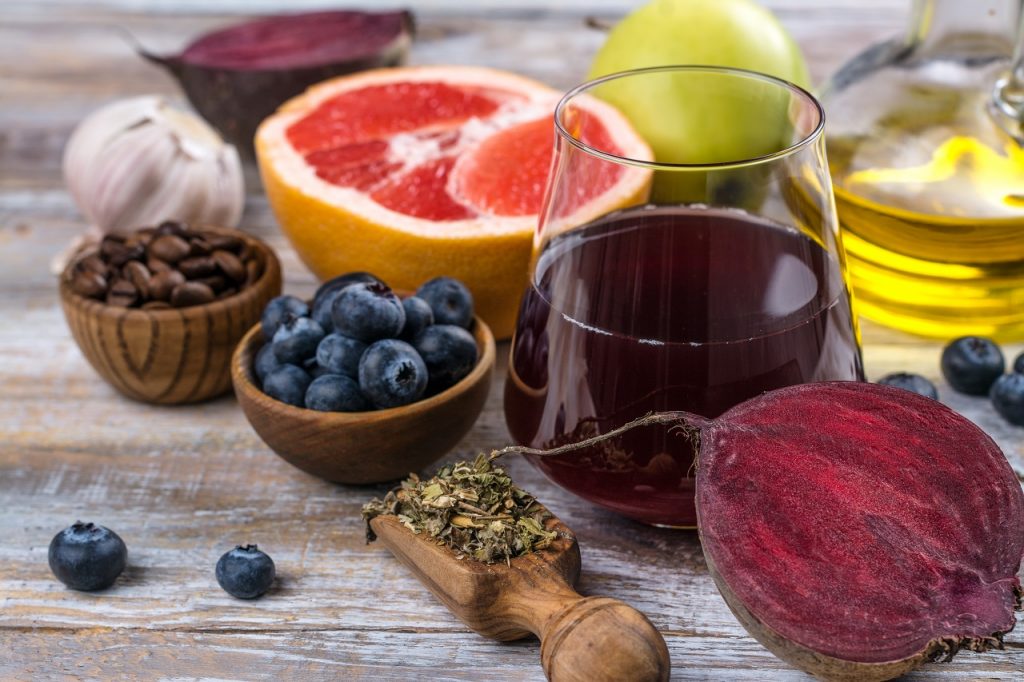 With the onset of winter, there’s always that one person at home who catches a cold and spreads it to the rest of the family members due to the close proximity. Infections spread easily during winter and given the ongoing pandemic, it has become quite important to support your immunity and avoid cough, cold and flu. But, is there a way to support your immunity naturally? Let’s take a look!
With the onset of winter, there’s always that one person at home who catches a cold and spreads it to the rest of the family members due to the close proximity. Infections spread easily during winter and given the ongoing pandemic, it has become quite important to support your immunity and avoid cough, cold and flu. But, is there a way to support your immunity naturally? Let’s take a look!
Support Your Immunity Naturally
- Improve gut health as your gut is your second brain. Any disturbance in gut health will affect your immune system. Prebiotics and probiotics together help keep the gut healthy. Prebiotics in simple terms is the food that feeds the friendly bacteria in the gut. Garlic, onion, leeks, asparagus, bananas, barley, oats and flax seeds all help increase gut friendly bacteria and improve the immune system. On the other hand, probiotics are living microorganisms which give health benefits when taken orally. Probiotic foods include sauerkraut, yogurt, Kimchi and tempeh.
- Eat Seasonal and dark coloured fruits and vegetables which are rich in antioxidants and vitamin C like oranges, sweet lime, amla, guava, apple, sweet potato, ginger, carrot and beetroot. You can also have sea buckthorn juice which is the best known source of vitamin C having 12 times more vitamin C than an orange. These foods help us keep our moisture levels and prevent dryness due to seasonal changes.
- Get your daily dose of Vitamin D: As there are less food sources of vitamin D, getting a good amount of sunlight, at least 20 minutes during the day, between 9am to 3pm or including supplements to maintain your vitamin D levels is very important, especially if you are living in an area with severe cold. Low levels of vitamin D can lead to low levels of mood boosting hormone, mood swings and depression.
- Supplement your regular diet with immune boosting herbs like ashwagandha, tulsi, turmeric, cinnamon, cardamom, methi seeds and ginger. The list is endless! These foods help us keep warm, improve gut health, reduce inflammation and also manage stress – all of which keeps our immunity at optimum levels.
- Get adequate sleep of 7-8 hours: When we sleep, we give our body a chance to repair and restore itself to optimal levels. It helps you gear up for the next day’s activities. Good sleep also means fewer cravings for unhealthy food, better management of stress, less hormonal variations and weight gain.
- Have well-balanced meals and avoid junk and unhealthy sweets in large quantities as they cause inflammation and increase your risk of infection. Including a lot of sugar in your diet also reduces the white blood cells ability to attack invaders. Having a lot of sweets also leads to more production of free radicals, which increases inflammation and lowers immunity.
- Exercise regularly: Aim for 30 minutes of exercise at least 5 days a week as it improves metabolism and blood circulation. This makes it easy for the body to digest food and improved blood circulation makes it easy for cells to absorb nutrients from it. Exercising regularly also helps improve cardiovascular health, manage BP and avoid many lifestyle diseases. Exercise helps us manage our weight as being overweight impairs immunity.
- Quit smoking and keep a check on alcohol intake: Nicotine is known to suppress neutrophil’s ability to kill pathogens, leading to tissue damage and inflammation. Research also proves that the brains of smokers have weaker neuro-immune response to infection and inflammation. Alcohol intake kills the healthy bacteria in the gut, triggering inflammation by altering the microbiome of the gut. It also destroys the cells of the immune system which leads to increased risk of serious infection. Alcohol also disrupts the body’s critical functions as the body does not have the ability to store alcohol as it does with other nutrients like carbohydrates or fats. So the moment one consumes alcohol, all the body’s energy is concentrated in breaking down the alcohol and sending it to the liver for further metabolism.
We hope this article helps you support your immunity and stay strong during winter. Do leave your thoughts in the comments below! For more on immunity, check out Healthy Reads or tune in to LIVE sessions by experts on GOQii Play.
#BeTheForce


 As we prepare to welcome the monsoons, along with the ongoing pandemic, the change in season might affect some of you as you may show symptoms of cold and flu. During this time especially, it becomes important to protect your body against any illness or disease caused by bacteria or viruses. The best way to prevent cold and flu is to boost your immunity!
As we prepare to welcome the monsoons, along with the ongoing pandemic, the change in season might affect some of you as you may show symptoms of cold and flu. During this time especially, it becomes important to protect your body against any illness or disease caused by bacteria or viruses. The best way to prevent cold and flu is to boost your immunity! 


